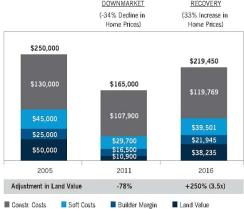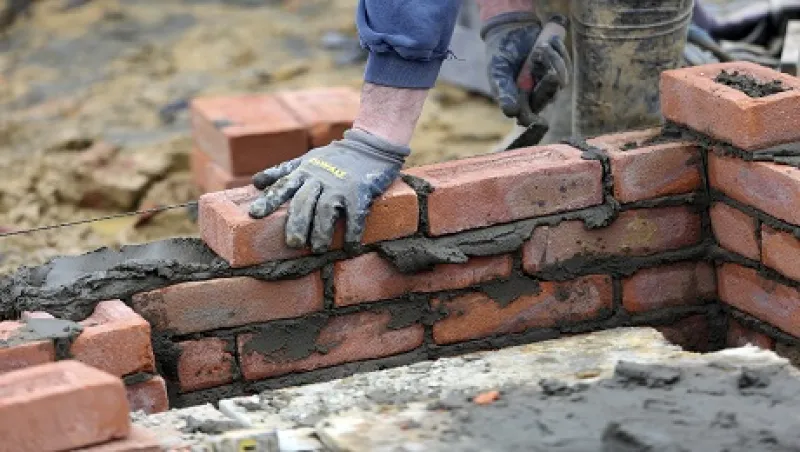We believe the U.S. housing market can offer attractive investment opportunities with the residential housing sector, which is showing signs of improvement with home prices slowly beginning to rise again after a severe elongated downturn.
Since the recession, many investors have favored high-quality multifamily homes as investments due to the sector’s current yield potential, low perceived risk and favorable financing terms. Multifamily assets have appreciated, garnering interest from a wide range of institutional buyers. In light of high rental-rate growth assumptions required and residual cap-rate risk, we believe multifamily pricing is now too high to achieve value-add and opportunistic returns. Even multifamily projects requiring significant redevelopment or development are priced to levels that we do not view as attractive.
One alternative to multifamily might have been the single-family rental strategy. However, significant competition has moved into this market considerably compressing returns. Although we are advocates of a home price recovery, extensive competition, operational challenges and exit uncertainty have led us to view the single-family rental strategy unfavorably. We view the home price appreciation assumptions that players in this space are making as aggressive and believe the large portfolios that they are aggregating will be unwieldy to manage and difficult to monetize in light of it being an unestablished institutional asset class. Meanwhile, the current yield differential between multifamily and single family rentals has narrowed from around 300 basis points to as little as 100 basis points (according to data from Real Capital Analytics, September 2012), which we do not believe adequately compensates investors for the incremental risk.
In contrast, we believe land aggregation strategies can offer attractive fundamental value and a more prudent entry point to benefit from the U.S. housing market recovery.
A new home’s price is comprised of land value, plus the cost to construct the home, plus an appropriate developer’s profit margin for the effort of entitling and constructing the home. Historically, the land represented about 20 percent of a new home’s value, but this varies depending on the market and the scarcity of land in that market. Both the cost of construction and the developer’s profit have been relatively stable through the cycle, while the value of the land was highly variable depending on the end value of the home. To the extent a home price has increased, most of the increase accrues to the value of the land.
Chart

Chart 1
Source: Paulson & Co. estimates. Soft costs include homebuilder G&A, warranty, marketing, and interest expenses. |
Today land values remain distressed, and many desirable land tracts can be acquired at steep discounts and low per lot values relative to the end price of a future home. Land can be bought through foreclosures, sales from real estate owned by lenders, short sales and from distressed sellers. We believe these investments should be made on an unleveraged basis, as the timing and extent of a housing recovery is uncertain. Land typically has low carrying costs, as it is unimproved. A well-capitalized and patient owner, with low carrying costs and no leverage, can wait for a recovery in home values that can result in an increase in land values that is multiples larger than the likely increase in home prices.
Opportunities for investment can be found both in larger tracts of land that are being held for residential development in the longer-term, as well as in smaller tracts of land that can be developed in the immediate and medium-term. This land can be developed into finished lots for sale to builders, or sold at a profit to other land holders who will undertake the finished lot development.
Homebuilders are capital constrained and find it more difficult to obtain bank financing. As a result, they find it difficult to buy housing lots to build a "land bank." Therefore, the homebuilders currently find it necessary to pay attractive pricing to land owners for finished lots, the inventory of which is increasingly waning in today’s environment.
In addition to land investment, the homebuilding business is increasingly attractive in today’s environment. Many homebuilders went bankrupt in the last cycle, leaving limited competition in the sector. The homebuilding space limited debt and equity capital available. Those who have access to capital have a competitive advantage in sourcing opportunities and generating an attractive margin in building. Smaller scale transactions, made by certain fund managers, are generating 20 to 30 percent developer’s margins and healthy return multiples without leverage. The larger public and private builders are accepting margins in the 8 to 12 percent range for larger projects, needing to achieve sales volume to cover their overhead (according to the filings of major publicly traded homebuilders, as of September 2012). However, disciplined private fund managers acquiring land through distress and not burdened by corporate overheads are building to healthier margins.
Though the above strategies forfeit some of the current cash flow generated by the single-family rental strategy, we believe they offer attractive total returns, including healthy returns even in an anemic housing recovery. We believe this strategy is a more prudent way to approach this sector of the market given the still early nature of the U.S. housing recovery.
Paul Vosper is managing director and co-head of the Morgan Stanley Alternative Investment Partners Real Estate Group.
The statements above reflect the views and opinions of Morgan Stanley Alternative Investment Partners as of the date hereof and not as of any future date and will not be updated or supplemented. All forecasts are speculative, subject to change at any time and may not come to pass due to economic and market conditions.






